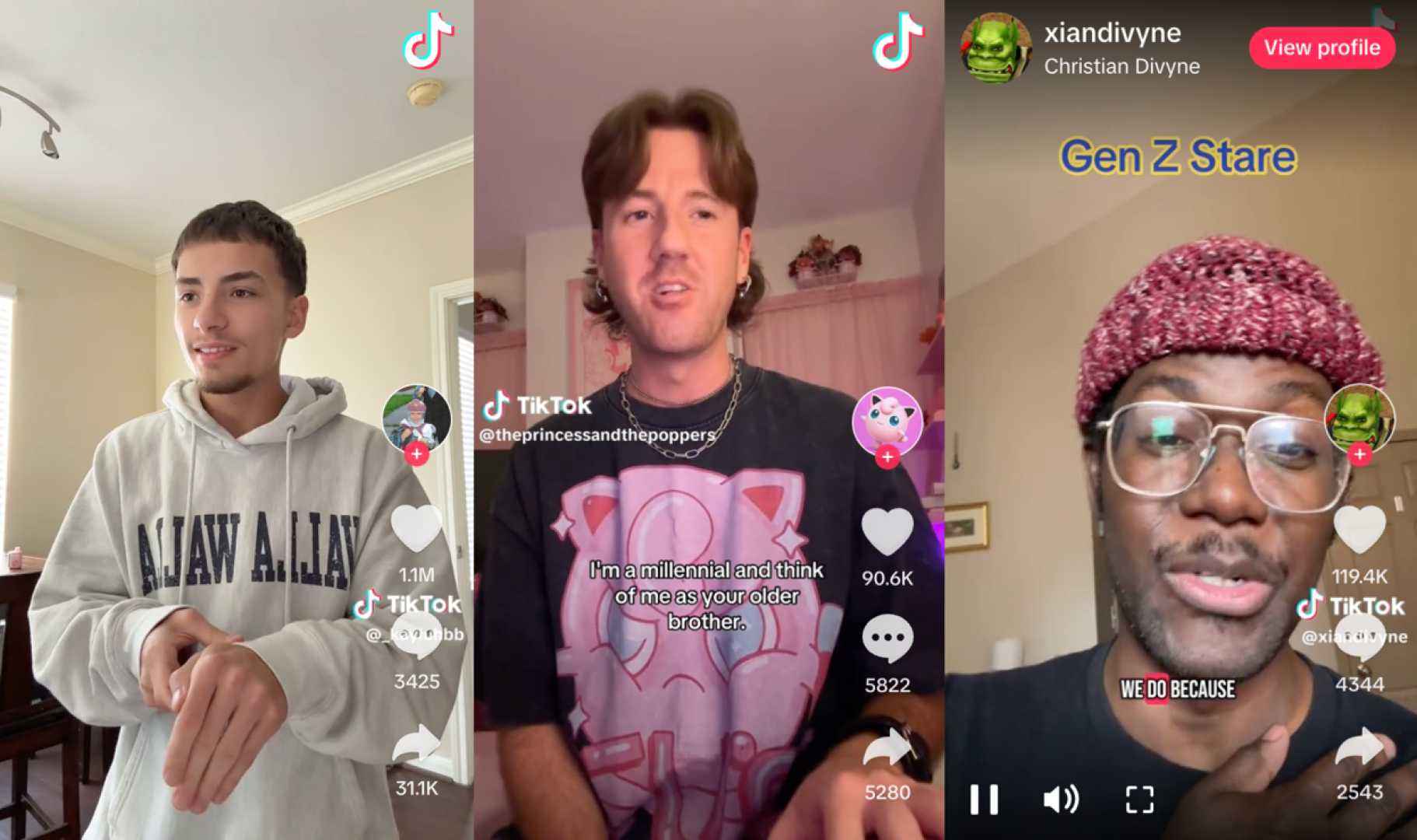Entertainment
Understanding the Controversy Behind the Gen Z Stare on TikTok

NEW YORK, NY — The latest social media controversy is centered around the so-called Gen Z stare. This phenomenon, often seen in TikTok videos, has sparked debates among users about its meaning and implications.
The Gen Z stare is generally described as a blank expression, characterized by a distant gaze into space, typically employed by those born between 1997 and 2012. It often happens when younger individuals encounter situations they find confusing or frustrating, particularly in customer service roles.
“It’s when older customers do something annoying that leads a Gen Z worker to stare in disbelief,” said a user on TikTok. Others have shared similar sentiments, noting that the stare can occur when younger people are approached for simple conversations or questions and choose not to respond.
However, not everyone agrees on the meaning of the stare. Some argue that it is not exclusive to Gen Z, suggesting that people of all ages have experienced similar reactions in frustrating situations. They claim that the stare signifies a reluctance to engage in small talk or mundane exchanges.
“The stare is really just a reflection of modern communication challenges,” said another TikTok creator. “It happens across generations, but Gen Z is getting a lot of heat for it.”
This debate has intensified as Gen Z users push back against critiques of their behavior, with some millennials teasing them for taking offense. “We’ve roasted millennials for years, so they should understand our defensive side,” one TikTok user commented.
The discourse around the Gen Z stare has grown, drawing attention to broader issues of social interaction and communication skills in a digital age. As users playfully criticize each other, the conversation seems to be more of a light-hearted jab rather than something taken seriously.
As trends evolve on social media platforms like TikTok, the Gen Z stare may serve as a lens for understanding generational differences in communication styles, leading to both laughter and debate among users.












